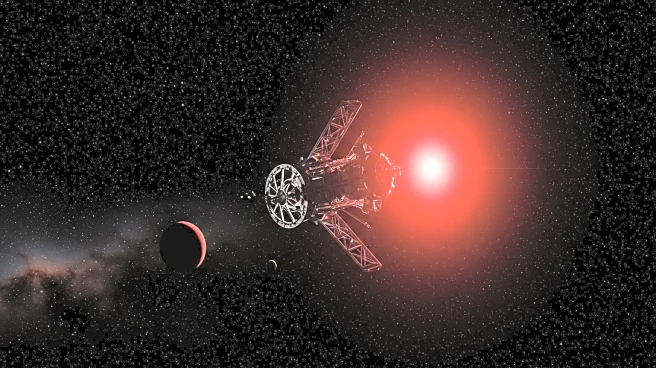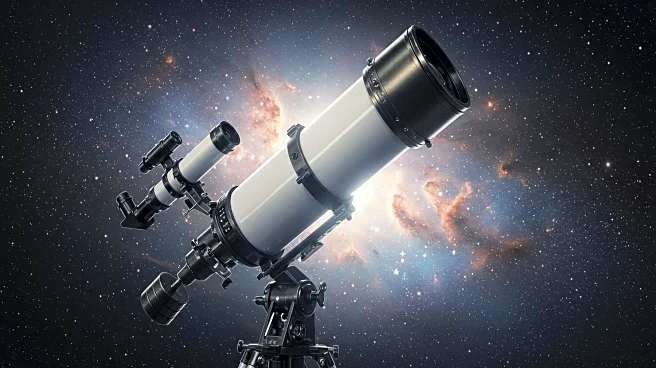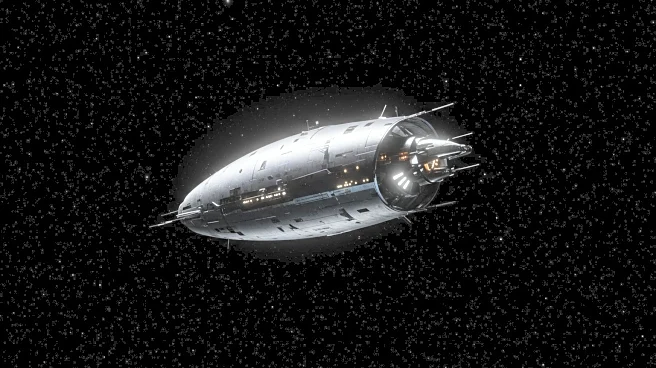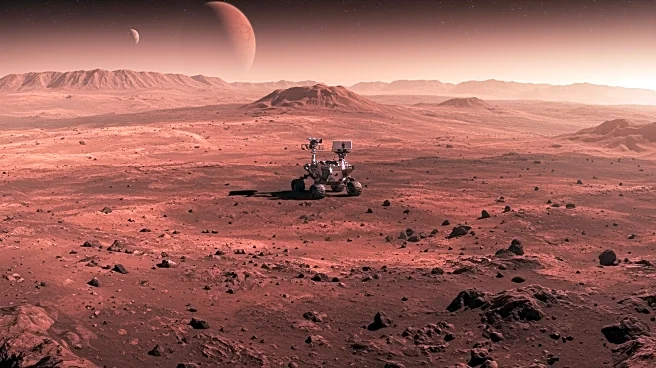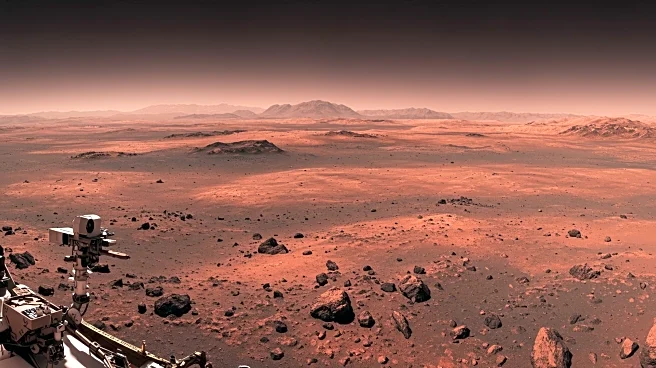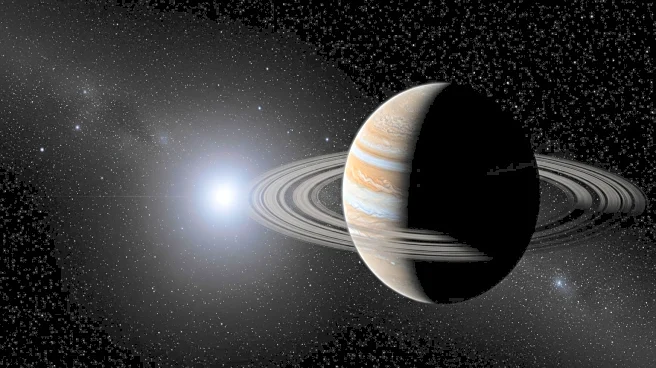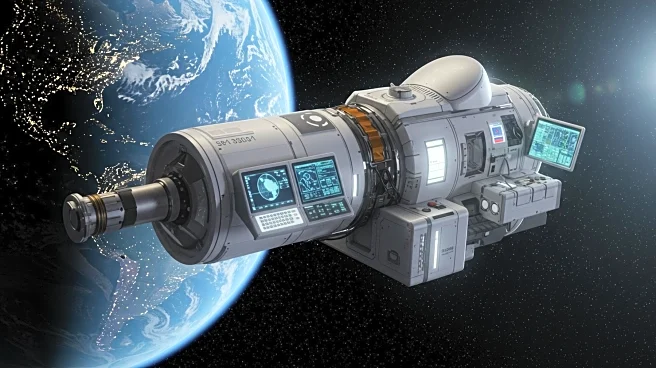What is the story about?
What's Happening?
NASA's James Webb Space Telescope has provided new insights into the exoplanet TRAPPIST-1 d, revealing that it does not possess an Earth-like atmosphere. TRAPPIST-1 d, located 40 light-years away, is part of a system known for having seven Earth-sized rocky planets orbiting a red dwarf star. The study, led by Caroline Piaulet-Ghorayeb from the University of Chicago and Trottier Institute for Research on Exoplanets, utilized Webb's NIRSpec instrument to search for atmospheric molecules such as water, methane, and carbon dioxide. The absence of these molecules suggests that TRAPPIST-1 d may have a thin atmosphere similar to Mars, thick clouds like Venus, or no atmosphere at all. This finding narrows the possibilities for habitable conditions on TRAPPIST-1 d, although further studies are planned to explore the atmospheres of other planets in the system.
Why It's Important?
The discovery is significant as it challenges the potential for habitability in the TRAPPIST-1 system, which has been a focal point for astronomers searching for Earth-like conditions beyond our solar system. Understanding the atmospheric conditions of these planets is crucial for determining their ability to support life. The findings also highlight the challenges posed by red dwarf stars, which frequently emit high-energy radiation that can strip away planetary atmospheres. As red dwarfs are the most common type of star in the Milky Way, insights gained from TRAPPIST-1 d could influence the search for habitable planets throughout the galaxy. The study underscores the capabilities of the Webb Telescope in advancing exoplanet research and lays the groundwork for future missions aimed at exploring potentially habitable worlds.
What's Next?
Future observations by the Webb Telescope will focus on the outer planets of the TRAPPIST-1 system, which may have better chances of retaining atmospheres due to their distance from the star's energetic flares. These studies will aim to detect atmospheric components such as water, which could indicate potential habitability. The research will also refine methods for distinguishing starlight from atmospheric signatures, enhancing the ability to study Earth-sized planets. NASA's continued exploration of exoplanet atmospheres will inform upcoming missions, such as the Habitable Worlds Observatory, in the quest to answer whether life exists beyond Earth.
Beyond the Headlines
The study of TRAPPIST-1 d and its lack of an Earth-like atmosphere raises broader questions about the conditions necessary for life and the resilience of planetary atmospheres in harsh stellar environments. It also prompts ethical considerations regarding the prioritization of resources in the search for extraterrestrial life. The findings may influence cultural perceptions of humanity's place in the universe and the potential for discovering life beyond Earth.
AI Generated Content
Do you find this article useful?
